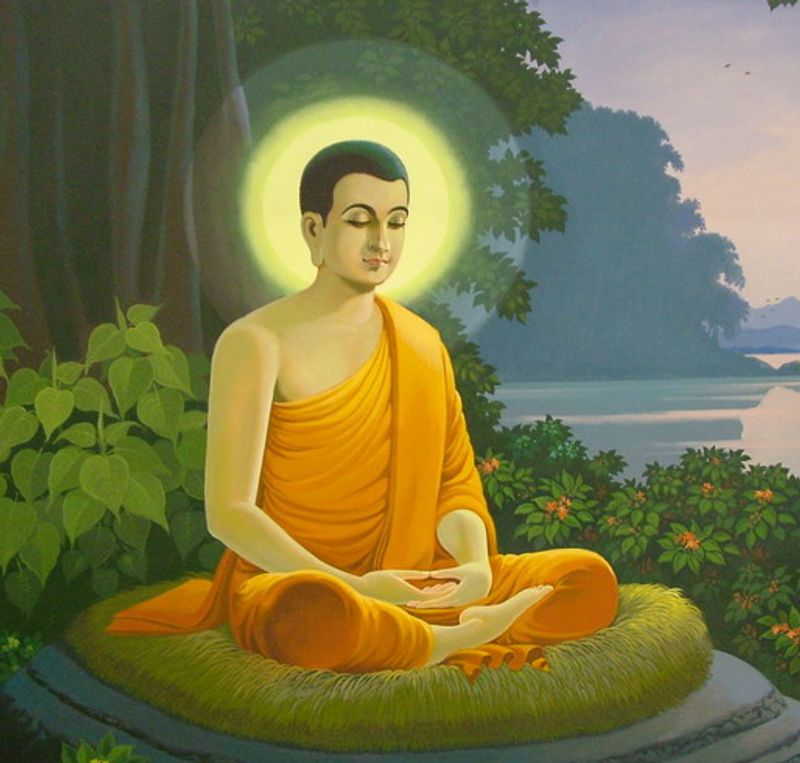What is Samadhi?
The literal meaning of word Samadhi in Yoga is bliss or enlightenment. The state of Samadhi in Yoga is also called the ultimate position in the voyage of Yoga. Likewise, Samadhi is called the final or the eight limb in the Patanjali or Yoga Sutra. When a person reaches the state of Samadhi his or her consciousness reaches to the state where he sees only better. It is the highest level of dhyana. Furthermore, only a few yogis who has been practicing yoga for longer period reach this state. Samadhi in yoga is taught by various yogic schools throughout the world.
When a person reaches the state of Samadhi then he can attach and detach whenever he wants. At the state of Samadhi in Yoga, he can thoroughly understand himself. Many yogis describes Samadhi in Yoga as the state which cannot be explained in the words and thus an individual who wants to attain the state of Samadhi in Yoga much practice to reach the ultimate yogic state. While some Yogis says that Samadhi is the blissful state where the individual connects himself with the whole universe.
How to practice?
Samadhi has been compared with meditation. Just as the meditation happens spontaneously, Samadhi also happens in a similar way. It cannot be practiced. When you become seasoned in Samadhi, it happens automatically without putting any efforts. The first state of Samadhi is putting concentration efforts also called Dharana. By practicing some time you can be a seasoned Samadhi yoga practitioners.
Dharana is another prerequisite to achieve Samadhi in Yoga. We build up concentration by practicing Dharana. In contrast, Dhyana helps you to de-focus and aids you to relax effortlessly. Through Samadhi, you can change from one state to another consciously. You put Dhyana at one time after practicing a few minutes you totally absorb and enjoy the blissfulness of the meditation.
In yoga, the experience of the vastness is the pined for the real world.
It is classified “Brahman” in Hinduism; anyway to a great extent Parabrahman, now and then Parashiva and now and again Parameshwara are additionally utilized. Regardless of what it is called, it is the experience of everything. That is the explanation Patanjali called it “Kaivalya”, “alone”. There is not much, near, or outside of it. It is all that is, was or ever will be. The ten kinds of samadhi are the progressive stages one must experience in moving from the general presence of our waking attention to the state of inconceivability, or Kaivalya.
Various kinds of Samadhi in Yoga
The Few sorts of Samadhi in yoga are:-
- Sabija Samadhi – As the name recommends, it is the Samadhi ‘with the seed’. It implies that there is an object of contemplation. The object of reflection is called pratyaya. There are 2 sorts of Sabija Samadhi:-
- Samprajatna Samadhi – In this Samadhi the searcher is caught up in Pratyaya at a solitary degree of cognizance. Saprajatna Samadhi can happen at every one of the four degrees of awareness. The four states are:-
- Savitarka Samadhi – Vitarka is the cognizance of particulars
- Savicara Samadhi – Vicara is the cognizance of the worldview
- Ananda – The cognizance of examples among standards, where one reflected on more over the examples than the worldview.
- Asmita – This is characterized as the awareness of unity. There are no differentiations between the phases of mindfulness in this cognizance.
- Asamprajatna Samadhi – This is the condition of moving starting with one level then onto the next of awareness. The four phases of progress are as per the following:-
a) Nirvitarka – vitarka to vicara
b) Nirvichara – vicara to Ananda
c) Ananda to Asmita
d) Asmita to Nirbija Samadhi
- Nirbija Samadhi – It is the Samadhi ‘without a seed’. It is the most elevated type of Samadhi and leads straightforwardly to Dharma Megha Samadhi.
- Dharma Megha Samadhi – It is the most remarkable sort of Samadhi. It is the condition of going out of the universe of relative happenings and environmental factors and progressing into Kaivaly

